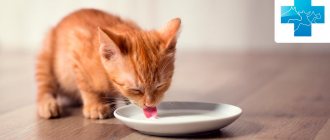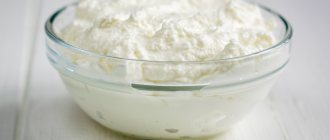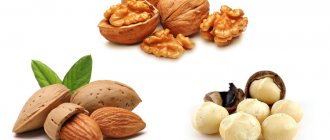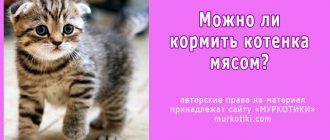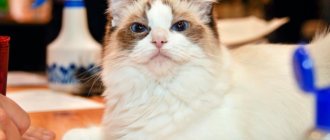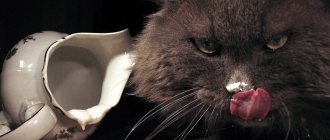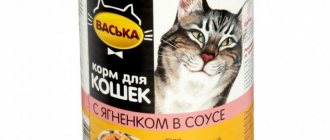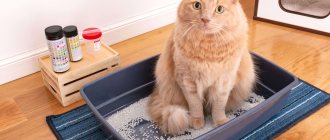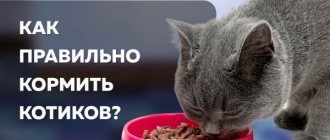As cat lovers, we all want to pamper our feline friends, but we also want them to be happy and healthy. While your cat may show interest in your human food, not everything on your plate is healthy for her, and you may want to think twice about sharing it.
We know that cats are primarily meat eaters, but what about the fattier meats we enjoy, like sausage? Is it safe to give your cat sausage? While technically the answer is yes, you'll have to jump through a lot of hoops to find the right sausage. Read on to learn more about what types of sausage you can offer your cat.
Is sausage too fatty for cats?
It's no secret that sausage is not that healthy for us, and one of the main reasons is the abundance of trans fats contained in most sausages. Dr. Jennifer Coates of PetMD says that saturated fats and trans fats are actually good for our cats. However, Dr. Coates also states that these fats are only good for cats in moderation.
© shutterstock
Sausage may be tasty, but it is not a good example of a food that contains moderate amounts of what we commonly call “unhealthy fats.” Although cats can safely consume some trans and saturated fats in their diet, an abundance of sausage is not a good source for your cat.
Number of feedings for the kitten
How many times a day should a kitten be fed at 1, 2, 3 months? Answer: often, but little by little, giving relief to the stomach. The age of the pet plays an important role. The breaks between meals in older animals increase. How often should you feed your kitten?
Here's an example diagram:
- 4 - 8 weeks: 6 - 8 times a day.
- 2 months: 5 times a day.
- 3 months: 4 times.
- 4 - 5 months to a year: 3 times. Night feedings are cancelled.
- 13 - 15 months: 2 times.
Some owners, when asked “how much to feed a kitten,” make the mistake of reducing the number of meals. The reason is being busy at work. There should be no reductions; stick to the proposed scheme. Having trouble with frequent feedings? Use the “free method”: leave a little kefir or soft food so that your pet can satisfy his hunger.
Is sausage too salty for cats?
Sausage tastes good because it's fatty and salty, so now that we know that fats aren't necessarily good for our cats, what about the salt content?
High salt content in food can be a problem for cats, but it's actually less of a problem than you might think. One of the major pet food suppliers, Yams, notes in this article that while high amounts of sodium are not necessarily good for your cat, excess salt is usually deposited in cat urine. They also note that it's healthy enough that veterinarians will likely only suggest limiting salt intake if your cat has a health problem.
Sausage contains a high concentration of salt, and while this may not be terribly harmful to your cat, it is best to reduce your salt intake to prevent problems.
Dangerous influence
Additives included in store-bought meat products can cause allergies in cats and disrupt the process of mechanical and chemical processing of food in the gastrointestinal tract. Scientists have noticed that animals get used to sausages and demand them regularly, and this is dangerous due to various chronic pathologies and refusal of other food. Store-bought sausages have absolutely no nutritional value, they are nothing more than just a concentrate of substances unnecessary for the body, and plus, some varieties are quite salty, which is especially undesirable for purrs, since salt puts a huge burden on the kidneys. Therefore, it is strongly not recommended to feed them to pregnant cats, small kittens and lactating females.
Source
What about low fat sausage?
So if fat seems to be the problem, are pork sausages safe for cats? Turkey and chicken sausage tend to be lower in fat, which is something we try to avoid and limit with our cats. Therefore, sausage made with less fatty meat is generally healthier for your cat.
However, another health concern when feeding cats any type of sausage is the presence of sulfites, nitrates and other preservatives. Experts say these preservatives (which are especially abundant in sausages and deli meats) can be harmful and even fatal if ingested in large quantities by cats and other pets.
The combination of fats, sulfites and nitrates makes most sausages unhealthy and unsuitable for cats.
Composition of the product
If we are talking about homemade sausages prepared with your own hands, then the composition of such a product is as follows:
This sausage product consists of natural healthy ingredients and excludes any additives that are undesirable for the cat’s body, which cannot be said about sausages from the store. Their recipe contains a whole list of chemical elements, due to which the product acquires a pink color, homogeneous consistency, pleasant taste and has a long shelf life. The following components are included in the sausages:
- nitrous acid salts;
- phosphates;
- saltpeter;
- protein-fat emulsions;
- stabilizers;
- carrageenan.
Based on the composition of the product, you can determine whether to give it to your pet, but in most cases, sausages are harmful to health.
Looking at the recipe of the sausages, it is clear that, apart from harm to the health of cats, they cannot cause anything else. In accordance with the technical specifications (TU) and the state standard, there was about 10% real meat in the sausages, another 1/3 was skin, fat and meat residues. The rest is additives in the form of stabilizers and emulsions. Often, when eating a sausage product, you come across tendons, blood, cartilage and bones; of course, the manufacturer does not indicate them in the description of the composition. Emulsions contain soy protein, which should not be mixed with meat, as well as vegetable oil, water and a casein protein ingredient. Includes sausage flour, a mixture of polysaccharides amylose and amylopectin, and various cereals. Therefore, such a sausage product can hardly be called a meat product.
Can cats have sausages?
Since the main health concern when feeding your cat sausage is the high amount of fat and abundance of preservatives, the only acceptable sausage is one made without any preservatives and, ideally, low in fat. There are many options for sausage made without preservatives, and choosing a base meat with less fat than pork is a good idea. However, you will want to feed your cat this low-fat, preservative-free sausage in small quantities to avoid any problems. You should also avoid giving your cat spicy sausage, as the spices in the meat can cause stomach problems or discomfort, regardless of what kind of meat the sausage is made from.
If your cat likes the smell or taste of sausage, there are many sausage-flavored cat foods and treats available, and they are made especially for felines! So while some sausages may be safe for your cat, it's best to leave the diet to the professionals and choose a sausage-based or sausage-flavored cat food.
© shutterstock
Homemade food or store-bought kitten food?
Arguing about which diet is best for a growing body is a thankless task. There will be plenty of supporters of feeding homemade food, as well as opponents. Both methods of eating have a number of advantages and disadvantages, for example, cooking at home will cost less than buying specialized food, but will the owner dare to cook every day? Those who advocate for home-cooked food are stopped by the price of store-bought quality food. What to feed small cats and cats is decided by each owner, based on his own ideas and income.
Monge Cat Grill Pouch pouches for kittens Norwegian salmon Complete canned food pieces in jelly with Norwegian salmon for kittens. Ingredients: meat and meat by-products (fresh.
Dry food for kittens Pro Plan Kitten Delicate Sensitive with sensitive digestion DRY COMPLETE FOOD FOR KITTENS WITH SENSITIVE DIGESTION OR WITH SPECIAL PREFERENCES IN FOOD, WITH TURKEY; RECOMMENDED FOR.
GO grain-free food for kittens and cats with sensitive digestion with trout and salmon
Monge Cat Monoprotein food for kittens with trout Monge Cat Monoprotein food for kittens with trout 1.5 kg. A complete, balanced diet for kittens. Contains a unique source.
Padovan Parrocchetti NaturalMix Padovan for medium-sized parrots Padovan for medium-sized parrots Complete, high-quality basic food with fruit and biscuit crumbs, with minerals and.
Dry food, Turkey & Rice for kittens (Turkey & Rice KITTEN) Monoprotein formula is ideal for the delicate digestive system of kittens. High content of essential proteins, healthy.
Brit PREMIUM dry food for sterilized cats Complete food for sterilized cats Contents: chicken meat, corn, rice, potatoes, dehydrated chicken protein.
Treat for large breed dogs CLAN FAMILY, star (pack 320 pcs)
Tetra ReptoFresh Conditioner - Purifies water and eliminates unpleasant odors in turtle huts, 12 pcs/pack For aquaterrariums with aquatic turtles - accelerates.
Dry food 1ST CHOICE, for puppies of miniature and small breeds (chicken)
Dried rabbit liver Dried rabbit liver is a hypoallergenic and dietary treat for pets. You can find a huge amount in the offal.
Pusy Cat, Ocean Absorbent Filler (green)
Perhaps expert advice will help you find the right solution:
- Consider financial possibilities: it makes sense to switch to a home cooking method if good specialized nutrition is expensive.
- Buying cheap food simply means harming your small pet; The composition of ready-made food advertised on TV is distinguished by the abundance of vegetables, meat and bone meal, and the addition of flavoring additives that are so attractive to cats. An unhealthy composition will result in problems with health and well-being.
- Kitten food is an ideal solution if the owner works a lot, stays late, is tired and does not have the strength to prepare a delicious dinner for the baby; take out the bag and you're done.
- Natural products are undoubtedly healthier than store-bought cat food. When choosing a method of feeding homemade food, remember: you will have to prepare a variety of dishes to cover your pet’s daily need for microelements. Make up for the deficiency with vitamin supplements. This incurs certain financial costs, but the finished pates and granules are balanced, the composition has the necessary substances for growth and harmonious development.
- A diet based on meat and cereals is ideal for a growing body. Physiologically, the intestines of animals are adapted to process hard protein foods, so soft foods (pates) become a common cause of constipation and diarrhea.
How can I feed my cat sausage?
As we've already discussed, too many treats can be detrimental to your kitty's health, so if you do choose a sausage that is low in fat and salt and made without preservatives, consider offering your cat a piece here and there as a special treats rather than as the main part of the meal. Make sure any piece you share with your cat is small enough that she won't choke or have difficulty chewing.
You should also remember that raw sausage can contain harmful bacteria such as salmonella, so always cook any pieces of sausage you offer your cat. A good rule of thumb when feeding your cat sausage is: if you don't eat it, your cat won't either.
Finally, sausage is made from meat stuffed inside a casing, and even when cooked, the casing can be fibrous and difficult to chew. Before giving your cat sausage, make sure it is a piece from the inside of the link and does not contain the casing. This will also help prevent your cat from choking.
Products safe for kitten health
What to feed a small cat at home?
When choosing food, remember: cats are carnivores, therefore, the lion's share of the daily table necessarily consists of protein foods (50% of the total volume). It is necessary to take into account the breed; some predators require more food. Their menu contains 60-80% meat.
Vegetables, dairy products, cereals, eggs will perfectly dilute the kitten’s diet. Don’t get carried away with cereals, their share in the diet is approximately 20-30%.
In general, the furry pet menu is similar to the adult menu, but there are restrictions. What to feed small kittens so as not to harm their well-being? The following products fully meet the “benefit + safety” formula:
Choose low-fat varieties (better absorbed by a growing body): beef, chicken, turkey, veal, game. Pork, lamb, goose, and duck are strictly prohibited - the fat content in them is harmful to the foolish. The exception is offal: heart, liver, lungs, ventricles, kidneys, but they are considered an addition to the main dishes.
What's the final verdict?
Sausage in small quantities is fine for your cat as long as it is made without preservatives. Also, be sure to choose lean, low-sodium sausages made from chicken or turkey rather than pork. Fat is good for cats, but its high concentration in sausage can be problematic, so moderation is key. Additionally, you should only offer your cat small pieces of fully cooked sausage without the casing, and it should be consumed in moderation as a treat, not as food.
Posted by Christian Adams An American expat living in Metro Manila, Philippines for over a decade, Christian is a lifelong cat lover and the proud father of two rescue cats, Trixie and Chloe. Both girls used to be among the crowds of homeless people who roam the cities and countryside. Three-year-old Trixie was rescued from a litter found under a neighbor's porch, and two-year-old Chloe was brought home by Christian's young son, Henry, who discovered the crying kitten in the parking lot.
Age-appropriate food for kittens
It is important to feed your furry pet according to its age: the menus of a 2-week-old and a 3-month-old baby are very different.
1) What to feed a small kitten for 1 month?
During the first month of life, the baby eats milk from its mother, which provides the body with the necessary nutrients. From the 5th week, the period begins to try new things in order to cover the growing naughty boy’s need for food. Getting used to “adult food” and lapping from a bowl is an important point. The following products will perfectly fulfill the above goals:
The milk suspension is ideal for the owner who is deciding the question: how to feed a 1-month-old kitten left without a mother?
Kittens begin to chew food during this period; pate for kittens is suitable for developing the skill. We invite you to purchase the product at the Zoomix store.
If the owner has chosen natural food as the main method, then you can stop at liquid porridge, adding chopped, pureed meat to the dish.
2) What can you feed a 1.5 month old kitten?
The diet is becoming more varied, lean boiled meats are being added to the menu: chicken, beef; new fermented milk products (cottage cheese).
3) What to feed a 2-month-old kitten: homemade food or ready-made food?
The main advice: increase the amount of solid food. Add vegetables, mix with meat, first chop very finely (grinding until minced is not recommended). Cereals dilute the meat diet well, digest in plenty of water, offer in liquid form, this is the main requirement for the care and feeding of a 2-month-old kitten. Milk remains the main product (50% of the diet). It’s too early to switch to food.
4) How and what to properly feed a kitten for 3-4 months (veterinarian advice)?
The age has come when fermented milk products are reduced by one-fourth from the entire table, whole milk is removed completely (lactose ceases to be absorbed). We cut the products a little larger, and prepare the porridge less liquid. The time has come to add raw vegetables to the kitten's diet at 3 months: zucchini, cucumber, potatoes.
5) What to feed a 5-6 month old kitten?
From five months, solid food completely replaces liquid food. When preparing vegetable and cereal dishes, make the consistency thicker.
Have you decided to switch to dry food? Now is the best time. For the first feeding, soak the pellets in water. What food is best to feed a kitten? Choose quality food: Hills Kitten, Royal Canin, Pro Plan. The period is characterized by the addition of sea fish (previously deboned) to the diet.
We hope the article helped solve the main difficulties with nutrition and caring for a meowing pet. Do you have any questions about choosing quality food? We invite you to the Zoomix store: experienced consultants will help you find the best!
Source
Xylitol, sugar
Cats do not have a sweet tooth by nature: they have few receptors on their tongues that distinguish sweet taste. And they simply cannot digest fast carbohydrates, much less sweeteners.
A cat may eat chewing gum or candy out of curiosity.
Sweet foods lead to diabetes. Xylitol is even more insidious: it causes the release of insulin, and blood glucose levels drop sharply. This leads to seizures and coma.
Caries is nonsense, cats are not afraid of it. But digesting sugar is not an easy task.
Cake? No, I didn’t see it!
Vegetables: cabbage, potatoes, tomatoes
Cats are predators by nature, but there are also gastronomic perverts among them. The owners declare this with particular pride: “My Vaska eats cucumbers!” “And mine is nibbling on cabbage!” And they don’t see the problem in the fact that the cat strives for “vitamins.” After all, we consider vegetables to be healthy.
The truth is that raw tomatoes and potatoes (especially potato peelings) contain a real poison - solanine. A cat may well be poisoned by a small tomato.
A cat cannot digest any raw vegetables. With zero nutritional value for the body, they can cause severe colic and bloating.
1. Onions and garlic
A cat usually does not chew garlic or onions. But some owners try to feed their pet garlic in order to destroy worms.
Onions and garlic are hidden in foods - cutlets, pilaf, soup, baby food. One serving of such food will not harm the cat, but poisons (sulfur compounds) accumulate in the body, causing the destruction of red blood cells and symptoms of chronic poisoning.
The cat is attracted to meat, but if you leave a bowl with the remains of the marinade, it can eat onions soaked in juice


